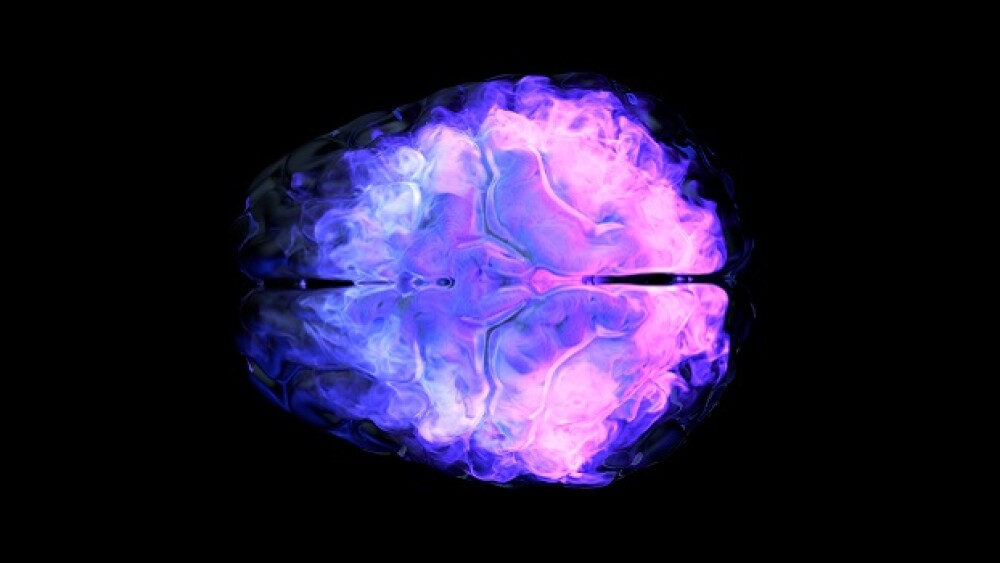BioArctic AB’s partner Eisai announced that Eisai has submitted a marketing authorization application for lecanemab, an investigational anti-amyloid beta protofibril[1] antibody for the treatment of mild cognitive impairment due to Alzheimer’s disease and mild AD dementia with confirmed presence of amyloid pathology in the brain to the Pharmaceuticals and Medical Devices Agency.
STOCKHOLM, Jan. 16, 2023 /PRNewswire/ -- BioArctic AB's (publ) (NASDAQ Stockholm: BIOA B) partner Eisai announced today that Eisai has submitted a marketing authorization application for lecanemab (Brand Name in the U.S.: LEQEMBI™), an investigational anti-amyloid beta (Aβ) protofibril[1] antibody for the treatment of mild cognitive impairment (MCI) due to Alzheimer's disease (AD) and mild AD dementia (collectively known as early AD) with confirmed presence of amyloid pathology in the brain to the Pharmaceuticals and Medical Devices Agency (PMDA). In conjunction with the regulatory filing in Japan announced today, and the subsequent acceptance of the file by PMDA, BioArctic is entitled to a milestone of MEUR 5.
This application is based on the results of the Phase 3 Clarity AD study and Phase 2b clinical study, which demonstrated that lecanemab-treatment reduced clinical decline in early AD. Prior to submitting this application, Eisai utilized the prior assessment consultation system of PMDA, with the aim of shortening the review period for lecanemab.
In the Clarity AD study, lecanemab treatment resulted in highly statistically significant results, reducing clinical decline on the global cognitive and functional scale as the primary endpoint (CDR-SB[2]: Clinical Dementia Rating-Sum of Boxes) as early as six months, and over time across all time points. All key secondary endpoints also showed highly statistically significant results. Especially, treatment with lecanemab showed a statistically significant reduction in amyloid plaque burden at all timepoints starting at three months in the amyloid PET study and statistically significantly slowed decline of activities of daily living on ADCS MCI-ADL[3]. The most common adverse events (>10%) in the lecanemab group were infusion reactions, ARIA-H (combined cerebral microhemorrhages, cerebral macrohemorrhages, and superficial siderosis), ARIA-E (edema/effusion), headache, and fall.
In November 2022, the results of the Clarity AD study were presented at the 2022 Clinical Trials on Alzheimer’s Disease (CTAD) conference, and simultaneously published in the peer-reviewed medical journal New England Journal of Medicine.
In the U.S., lecanemab was granted accelerated approval as a treatment for AD by the Food and Drug Administration (FDA) on January 6, 2023. Eisai submitted a Supplemental Biologics License Application (sBLA) to the FDA for full approval under the traditional pathway on the same day. In Europe, Eisai submitted marketing authorization application (MAA) to the European Medicines Agency (EMA) on January 9, 2023. In China, Eisai initiated submission of data for a BLA to the National Medical Products Administration (NMPA) in December 2022.
Eisai serves as the lead of lecanemab development and regulatory submissions globally with both Eisai and Biogen co-commercializing and co-promoting the product and Eisai having final decision-making authority. BioArctic has right to commercialize lecanemab in the Nordic under certain conditions and is currently preparing for commercialization in the Nordics together with Eisai. BioArctic has no development costs for lecanemab in Alzheimer's disease and is entitled to payments in connection with regulatory filings, approvals, and sales milestones as well as royalties on global sales.
This release discusses investigational uses of an agent in development and is not intended to convey conclusions about efficacy or safety. There is no guarantee that such an investigational agent will successfully gain health authority approval.
This information is information that BioArctic AB (publ) is obliged to disclose pursuant to the EU Market Abuse Regulation. The information was released for public disclosure, through the agency of the contact person below, on January 16, 2023, at 01.30 a.m. CET.
For further information, please contact:
Oskar Bosson, VP Communications and IR
E-mail: oskar.bosson@bioarctic.se
Phone: +46 70 410 71 80
Note to editors
INDICATION, DOSAGE AND ADMINISTRATION, AND IMPORTANT SAFETY INFORMATION IN THE U.S
INDICATION
LEQEMBI is indicated for the treatment of Alzheimer's disease. Treatment with LEQEMBI should be initiated in patients with mild cognitive impairment or mild dementia stage of disease, the population in which treatment was initiated in clinical trials. There are no safety or effectiveness data on initiating treatment at earlier or later stages of the disease than were studied. This indication is approved under accelerated approval based on reduction in amyloid beta plaques observed in patients treated with LEQEMBI. Continued approval for this indication may be contingent upon verification of clinical benefit in a confirmatory trial.
IMPORTANT SAFETY INFORMATION
WARNINGS AND PRECAUTIONS
Amyloid Related Imaging Abnormalities
LEQEMBI can cause amyloid related imaging abnormalities-edema (ARIA-E) and -hemosiderin deposition (ARIA-H) ARIA-E can be observed on MRI as a brain edema or sulcal effusions, and ARIA-H as microhemorrhage and superficial siderosis. ARIA is usually asymptomatic, although serious and life-threatening events, including seizure and status epilepticus, rarely can occur. Reported symptoms associated with ARIA may include headache, confusion, visual changes, dizziness, nausea, and gait difficulty. Focal neurologic deficits may also occur. Symptoms associated with ARIA usually resolve over time.
ARIA monitoring and dose management guidelines
- Obtain recent (within one year) brain magnetic resonance imaging (MRI) prior to initiating treatment with LEQEMBI. Obtain an MRI prior to the 5th, 7th, and 14th infusions.
- Recommendations for dosing in patients with ARIA-E and ARIA-H depend on clinical symptoms and radiographic severity. Depending on ARIA severity, use clinical judgment in considering whether to continue dosing, temporarily discontinue treatment, or permanently discontinue LEQEMBI.
- Enhanced clinical vigilance for ARIA is recommended during the first 14 weeks of treatment with LEQEMBI. If a patient experiences symptoms suggestive of ARIA, clinical evaluation should be performed, including MRI if indicated. If ARIA is observed on MRI, careful clinical evaluation should be performed prior to continuing treatment.
- There is no experience in patients who continued dosing through symptomatic ARIA-E or through asymptomatic, but radiographically severe, ARIA-E. There is limited experience in patients who continued dosing through asymptomatic but radiographically mild to moderate ARIA-E. There are limited data in dosing patients who experienced recurrent ARIA-E.
Incidence of ARIA
- In Study 1 (Phase 2b), symptomatic ARIA-E occurred in 3% (5/161) of LEQEMBI-treated patients. Clinical symptoms associated with ARIA resolved in 80% of patients during the period of observation.
- Including asymptomatic cases, ARIA was observed in LEQEMBI: 12% (20/161), placebo: 5% (13/245). ARIA-E was observed in LEQEMBI: 10% (16/161), placebo: 1% (2/245). ARIA-H was observed in LEQEMBI: 6% (10/161), placebo 5% (12/245). There was no increase in isolated ARIA-H for LEQEMBI compared to placebo.
- Intracerebral hemorrhage >1 cm in diameter was reported after one treatment in LEQEMBI: 1 patient, placebo: zero patients. Events of intracerebral hemorrhage, including fatal events, in patients taking LEQEMBI have also been reported in other studies.
Apolipoprotein E ε4 (ApoE ε4) carrier status and risk of ARIA
- In Study 1 (Phase 2b), 6% (10/161) of patients in the LEQEMBI group were ApoE ε4 homozygotes, 24% (39/161) were heterozygotes, and 70% (112/161) were noncarriers.
- The incidence of ARIA was higher in APOE ε4 homozygotes than in heterozygotes and noncarriers among patients treated with LEQEMBI. Of the 5 LEQEMBI-treated patients who had symptomatic ARIA, 4 were ApoE ε4 homozygotes, 2 of whom experienced severe symptoms. An increased incidence of symptomatic and overall ARIA in ApoE ε4 homozygotes compared to heterozygotes and noncarriers in LEQEMBI-treated patients has been reported in other studies.
- The recommendations on management of ARIA do not differ between ApoE ε4 carriers and noncarriers.
- Consider testing for ApoE ε4 status to inform the risk of developing ARIA when deciding to initiate treatment with LEQEMBI.
Radiographic findings
- The majority of ARIA-E radiographic events occurred early in treatment (within the first 7 doses), although ARIA can occur at any time and patients can have more than 1 episode. The maximum radiographic severity of ARIA-E in patients treated with LEQEMBI was mild in 4% (7/161) of patients, moderate in 4% (7/161) of patients, and severe in 1% (2/161) of patients. Resolution on MRI occurred in 62% of ARIA-E patients by 12 weeks, 81% by 21 weeks, and 94% overall after detection. The maximum radiographic severity of ARIA-H microhemorrhage in patients treated with LEQEMBI was mild in 4% (7/161) of patients and severe in 1% (2/161) of patients; 1 of the 10 patients with ARIA-H had mild superficial siderosis.
Concomitant antithrombotic medication and other risk factors for intra-cerebral hemorrhage
- Patients were excluded from enrollment in Study 1 (Phase 2b) baseline based on use of anticoagulant medications. Antiplatelet medications such as aspirin and clopidogrel were allowed. If anticoagulant medication was used because of intercurrent medical events that required treatment for ≤4 weeks, treatment with LEQEMBI was to be temporarily suspended.
- Most exposures to antithrombotic medications were to aspirin; few patients were exposed to other antiplatelet drugs or anticoagulants, limiting any meaningful conclusions about the risk of ARIA or intracerebral hemorrhage in patients taking other antiplatelet drugs or anticoagulants. Because intracerebral hemorrhages >1 cm in diameter have been observed in patients taking LEQEMBI, additional caution should be exercised when considering the administration of antithrombotics or a thrombolytic agent (e.g., tissue plasminogen activator) to a patient already being treated with LEQEMBI.
- Patients were excluded from enrollment in Study 1 (Phase 2b) for the following risk factors for intra-cerebral hemorrhage: prior cerebral hemorrhage greater than> 1 cm in greatest diameter, more than 4 microhemorrhages, superficial siderosis, evidence of vasogenic edema, evidence of cerebral contusion, aneurysm, vascular malformation, infective lesions, multiple lacunar infarcts or stroke involving a major vascular territory, severe small vessel or white matter disease. Caution should be exercised when considering the use of LEQEMBI in patients with these risk factors.
Infusion-related reactions
- Infusion-related reactions were observed in LEQEMBI: 20% (32/161), placebo: 3% (8/245, and the majority (88%, 28/32) occurred with the first infusion. All infusion-related reactions were mild (56%) or moderate (44%) in severity. Infusion-related reactions resulted in discontinuations in 2% (4/161) of patients treated with LEQEMBI. Symptoms of infusion-related reactions include fever and flu-like symptoms (chills, generalized aches, feeling shaky, and joint pain), nausea, vomiting, hypotension, hypertension, and oxygen desaturation.
- After the first infusion, 38% of LEQEMBI-treated patients had transient decreased lymphocyte counts to less than 0.9 x109/L compared to 2% in patients on placebo, and 22% of patients treated with LEQEMBI had transient increased neutrophil counts to greater 7.9 x109/L compared to 1% of patients on placebo.
- In the event of an infusion-related reaction, the infusion rate may be reduced, or the infusion may be discontinued, and appropriate therapy initiated as clinically indicated. Prophylactic treatment with antihistamines, acetaminophen, nonsteroidal anti-inflammatory drugs, or corticosteroids prior to future infusions may be considered.
ADVERSE REACTIONS
- In Study 1 (Phase 2b), 15% of LEQEMBI-treated patients, compared to 6% of placebo-treated patients, stopped study treatment because of an adverse reaction. The most common adverse reaction leading to discontinuation of LEQEMBI was infusion-related reactions that led to discontinuation in 2% (4/161) of patients treated with LEQEMBI compared to 1% (2/245) of patients on placebo.
- The most common adverse reactions reported in >5% of patients treated with LEQEMBI (N=161) and >2% higher than placebo (N=245) in Study 1 (Phase 2b) were infusion-related reactions (LEQEMBI, 20%; placebo, 3%), headache (LEQEMBI, 14%; placebo, 10%), ARIA-E (LEQEMBI, 10%; placebo, 1%), cough (LEQEMBI, 9%; placebo, 5%) and diarrhea (LEQEMBI, 8%; placebo, 5%).
Please see LEQEMBI US Prescribing Information.
About lecanemab
Lecanemab (Brand Name in the U.S.: LEQEMBI™) is the result of a strategic research alliance between BioArctic and Eisai. Lecanemab is a humanized immunoglobulin gamma 1 (IgG1) monoclonal antibody directed against aggregated soluble and insoluble forms of amyloid-beta (Aβ). In the U.S., LEQEMBI was granted accelerated approval by the U.S. Food and Drug Administration (FDA) on January 6, 2023. LEQEMBI is indicated for the treatment of Alzheimer's disease (AD) in the U.S. Treatment with LEQEMBI should be initiated in patients with mild cognitive impairment or mild dementia stage of disease, the population in which treatment was initiated in clinical trials. There are no safety or effectiveness data on initiating treatment at earlier or later stages of the disease than were studied. This indication is approved under accelerated approval based on reduction in Aβ plaques observed in patients treated with LEQEMBI. Continued approval for this indication may be contingent upon verification of clinical benefit in a confirmatory trial. Eisai submitted a sBLA to the FDA for full approval under the traditional pathway on January 6, 2023. In Europe, Eisai submitted marketing authorization application (MAA) to the European Medicines Agency (EMA) on January 9, 2023. In China, Eisai initiated submission of data for BLA to the National Medical Products Administration (NMPA) of China in December 2022.
Eisai has completed a LEQEMBI subcutaneous bioavailability study and subcutaneous dosing is currently being evaluated in the Clarity AD open label extension study.
Since July 2020 Eisai's Phase 3 clinical study (AHEAD 3-45) for individuals with preclinical AD, meaning they are clinically normal and have intermediate or elevated levels of amyloid in their brains, is ongoing. AHEAD 3-45 is conducted as a public-private partnership between the Alzheimer's Clinical Trial Consortium that provides the infrastructure for academic clinical trials in AD and related dementias in the U.S, funded by the National Institute on Aging, part of the National Institutes of Health and Eisai.
Since January 2022, the Tau NexGen clinical study for Dominantly Inherited AD (DIAD) is ongoing, where lecanemab is given as a background anti-amyloid treatment when exploring combination therapies with anti-tau treatments. The study is conducted by Dominantly Inherited Alzheimer Network Trials Unit (DIAN-TU), led by Washington University School of Medicine in St. Louis.
About Phase 2b (Study 201) study and Phase 3 Clarity AD study
Phase 2b clinical study was conducted as a double-blind, parallel-group, dose-finding study of lecanemab or placebo for 18 months in 856 people living with early AD. Lecanemab treatment resulted in a dose-dependent, longitudinal, and significant reduction in PET SUVR, which assesses amyloid-β accumulation in the brain, compared to placebo. At 18 months, ADCOMS[4], CDR-SB, and ADAS-cog14[5] showed a dose-dependent reduction in clinical decline, with suppression rates of 29.7%, 26.5%, and 47.2% in the 10 mg/kg bi-weekly treatment, respectively. The study did not achieve its primary outcome measure[6] at 12 months of treatment. The most common adverse events occurring in the 10 mg/kg biweekly group (incidence ≥ 5% and more frequent than in the placebo group) were infusion reactions (19.9%), headache (13.7%), ARIA-E (9.9%), cough (8.7%), diarrhea (8.1%), dizziness (7.5%), and cerebral microhemorrhages (5.6%).
Phase 3 Clarity AD study was conducted as a placebo-controlled, double-blind, parallel-group, randomized study of lecanemab 10 mg/kg or placebo administered bi-weekly for 18 months in 1,795 people living with early AD. Mean change of CDR-SB from baseline at 18 months as the primary endpoint was 1.21 and 1.66 for lecanemab and placebo groups, respectively. Lecanemab treatment resulted in highly statistically significant results, reducing clinical decline on the global cognitive and functional scale, compared with placebo at 18 months by -0.45 (95% Confidence Interval (CI): -0.67, -0.23; P=0.00005), representing a 27% slowing of decline. Starting as early as six months (difference: -0.17 [95% CI: -0.29, -0.05]; P<0.01), and increasing in absolute difference over time across all time points every 3 months, the treatment showed highly statistically significant changes in CDR-SB from baseline compared to placebo (all p-values are less than 0.01). All key secondary endpoints, amyloid Positron Emission Tomography (PET) using Centiloids, ADAS-Cog14, ADCOMS and ADCS MCI-ADL, also showed highly statistically significant results compared with placebo (P<0.001).
The most common adverse events (>10%) in the lecanemab group were infusion reactions (lecanemab: 26.4%; placebo: 7.4%), ARIA-H (combined cerebral microhemorrhages, cerebral macrohemorrhages, and superficial siderosis; lecanemab: 17.3%; placebo: 9.0%), ARIA-E (edema/effusion; lecanemab: 12.6%; placebo: 1.7%), headache (lecanemab: 11.1%; placebo: 8.1%), and fall (lecanemab: 10.4%; placebo: 9.6%). Infusion reactions were largely mild-to-moderate (grade 1-2: 96%) and occurred on the first dose (75%).
During the study period, deaths occurred in 0.7% and 0.8% of participants in the lecanemab and placebo groups, respectively and no deaths were related to lecanemab or occurred with amyloid-related imaging abnormalities (ARIA) in 18-month double-blind study period. Serious adverse events were experienced by 14.0% of participants in the lecanemab group and 11.3% of participants in the placebo group. Treatment-emergent adverse events occurred in 88.9% and 81.9% of participants in the lecanemab and placebo groups, respectively. Treatment-emergent adverse events leading to drug withdrawal occurred in 6.9% and 2.9% of participants in the lecanemab and placebo groups, respectively.
Overall, lecanemab's ARIA incidence profile was within expectations based on the Phase 2 trial results. ARIA-E events were largely mild-to-moderate radiographically (91% of those who had ARIA-E), asymptomatic (78% of those who had ARIA-E), occurred within the first 3 months of treatment (71% of those who had ARIA-E) and resolved within 4 months of detection (81% of those who had ARIA-E). Among the 2.8% of lecanemab-treated subjects with symptomatic ARIA-E, the most commonly reported symptoms were headache, visual disturbance, and confusion. The incidence of symptomatic ARIA-H was 0.7% in the lecanemab group and 0.2% in the placebo group. No imbalance was observed in isolated ARIA-H (i.e., ARIA-H in participants who did not also experience ARIA-E) between lecanemab (8.9%) and placebo (7.8%).
About the collaboration between BioArctic and Eisai
Since 2005, BioArctic has a long-term collaboration with Eisai regarding the development and commercialization of drugs for the treatment of Alzheimer's disease. The most important agreements are the Development and Commercialization Agreement for the lecanemab antibody, which was signed in December 2007, and the Development and Commercialization agreement for the antibody BAN2401 back-up for Alzheimer's disease, which was signed in May 2015. In March 2014, Eisai and Biogen entered into a joint development and commercialization agreement for lecanemab. Eisai is responsible for the clinical development, application for market approval and commercialization of the products for Alzheimer's disease. BioArctic has right to commercialize lecanemab in the Nordic under certain conditions and is currently preparing for commercialization in the Nordics together with Eisai. BioArctic has no development costs for lecanemab in Alzheimer's disease and is entitled to payments in connection with regulatory filings, approvals, and sales milestones as well as royalties on global sales.
About BioArctic AB
BioArctic AB (publ) is a Swedish research-based biopharma company focusing on disease-modifying treatments for neurodegenerative diseases, such as Alzheimer's disease, Parkinson's disease and ALS. BioArctic focuses on innovative treatments in areas with high unmet medical needs. The company was founded in 2003 based on innovative research from Uppsala University, Sweden. Collaborations with universities are of great importance to the company together with its strategically important global partner Eisai in Alzheimer disease. The project portfolio is a combination of fully funded projects run in partnership with global pharmaceutical companies and innovative in-house projects with significant market and out-licensing potential. BioArctic's Class B share is listed on Nasdaq Stockholm Mid Cap (ticker: BIOA B). For more information about BioArctic, please visit www.bioarctic.com.
[1] Protofibrils are large Aβ aggregated soluble species of 75-500 Kd.
[2] CDR-SB is a numeric scale used to quantify the various severity of symptoms of dementia. Based on interviews of people living with AD and family/caregivers, qualified healthcare professionals assess cognitive and functional performance in six areas: memory, orientation, judgment and problem solving, community affairs, home and hobbies, and personal care. The total score of the six areas is the score of CDR-SB, and CDR-SB is also used as an appropriate item for evaluating the effectiveness of therapeutic drugs targeting the early stages of AD.
[3] ADCS MCI-ADL assesses the competence of patients with MCI in activities of daily living (ADLs), based on 24 questions to the patient's partner about actual recent activities of daily living.
[4] Developed by Eisai, ADCOMS combines items from the ADAS-Cog scale for assessing cognitive functions, MMSE and the CDR scale for evaluating the severity of dementia to enable highly sensitive detection of changes in clinical functions of early AD symptoms and changes in memory
[5] ADAS-Cog is the most common cognitive assessment instrument used in AD clinical trials all over the world. ADAS-Cog14 consists of 14 competencies: word recall, commands, constructional praxis, object and finger naming, ideational praxis, orientation, word recognition, remembering word recognition instructions, comprehension of spoken language, word finding difficulty, spoken language ability, delayed word recall, number cancellation, and maze task. ADAS-Cog has been used in clinical trials for earlier stages of AD including MCI.
[6] An 80% or higher estimated probability of demonstrating 25% or greater slowing in clinical decline at 12 months treatment measured by ADCOMS from baseline compared to placebo.
The following files are available for download:
|
BioArctic’s partner Eisai submits marketing authorization application for lecanemab as treatment for early Alzheimer’s disease in Japan |
![]() View original content:https://www.prnewswire.com/news-releases/bioarctics-partner-eisai-submits-marketing-authorization-application-for-lecanemab-as-treatment-for-early-alzheimers-disease-in-japan-301722047.html
View original content:https://www.prnewswire.com/news-releases/bioarctics-partner-eisai-submits-marketing-authorization-application-for-lecanemab-as-treatment-for-early-alzheimers-disease-in-japan-301722047.html
SOURCE BioArctic
Company Codes: Stockholm:BIOAB, ISIN:SE0010323311, RICS:BIOAB.ST




